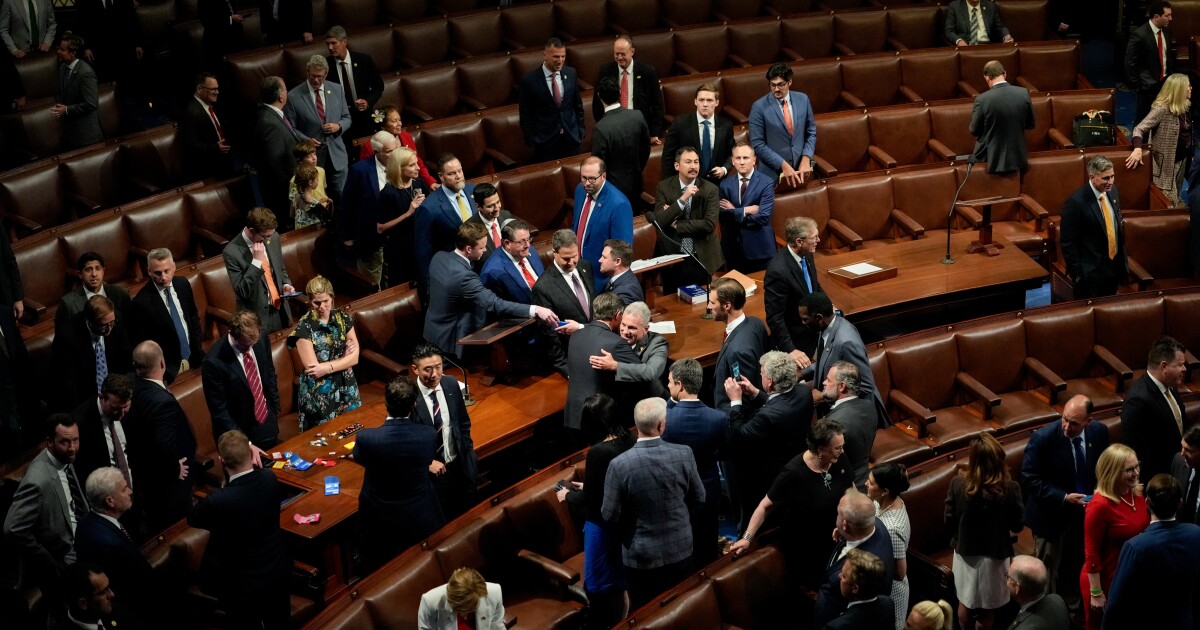Vania Esady
Monetary policy actions transmit to inflation and real activity with ‘long and variable’ lags. However, it is not obvious how the effectiveness of monetary policy varies across economic states (for instance pace of economic growth). The academic literature suggests the possibility effects of monetary policy being state dependent. For example, Tenreyro and Thwaites (2016) find that the effects of monetary policy is weaker in recessions. Many existing works are based on US data – raising the question how relevant these findings are to the UK economy, which is where this post aims to add. This work also fed into the recent Quarterly Bulletin on how monetary policy transmits.
The effects of monetary policy shocks on inflation and activity
I estimate the causal impact of monetary policy shocks on macroeconomic variables using an empirical strategy that combines two popular methodologies from the recent literature. First, I apply smooth transition local projections that can easily be adapted for estimating a state-dependent model. Second, the shocks underpinning the analysis are the high-frequency monetary policy surprises of Cesa-Bianchi et al (2020). The results shown in this post are responses to a surprise tightening of monetary policy. Our sample period runs from 1997–2019 to avoid the estimates being distorted by the Covid period.
Before investigating the state-dependent effects of monetary policy, it would first be useful to pin down the linear monetary transmission, not conditioning on the state of the economy – shown in Chart 1. In line with theoretical predictions, contractionary monetary policy reduces the CPI (seasonally adjusted price level), lowering industrial production and raising unemployment – all after a significant lag of 24–48 months. The impulses responses show that a 100 basis point surprise hike lowers the price level by 5%, lowers industrial production by 10% and increases the unemployment rate by 2 percentage points at their peak. The size of these responses are broadly in line with empirical estimates in the literature using local projections and empirical results in other UK-focused works such as Braun et al (2023), Cloyne and Hürtgen (2016), and Cesa-Bianchi et al (2020). However, these indeed come with longer lags than what we may expect. While Cloyne and Hürtgen could not solve the short-run price puzzle and suggest that it could be due to the short sample period for the UK, the last paper tends to find a more rapid impact on the price level.
Chart 1: Linear effects to a contractionary monetary policy shock with 90% confidence intervals
Note: SA indicates that the data are seasonally adjusted.
Source: Author’s calculation.
State-dependent effects
However, the state-independent impulse response functions (IRFs) in Chart 1 essentially represent average responses over our sample period – potentially masking the heterogeneous effect of monetary policy shocks across different states of the economy. In this context, one can think of the states being determined by the pace of economic growth (distinguishing between high and low-growth regimes) or the level of trend inflation (distinguishing between periods in which inflation trends high versus low).
Starting with the pace of economic growth, we could think of low output growth periods as ‘recessionary periods’ (but note this is different to the definition of technical recessions). Chart 2 plots the probability of being in the state of low output growth in our sample, which is used to weight the monetary policy shocks. There is a higher probability of recessions around the global financial crisis (GFC), but also some more evidence of the economy being in a low-growth period in early 2000s and after the GFC.
Chart 2: ‘Low output growth’: probability of output growth
Source: Author’s calculation.
How do the effects of monetary policy shocks vary with the pace economic growth? Chart 3 shows contractionary monetary shocks have a stronger anti-inflationary effect when growth is low. At the same time, and in line with the finding by Tenreyro and Thwaites (2016), the real effects of monetary policy seem to be more in line with the conventional signs during expansionary periods. This suggests that price flexibility may be greater in recessions, giving rise to a steeper Phillips curve. Combined with the observation that the change in unemployment rate in response to a monetary shock is not statistically significant when the economy is weak, it may be the case that monetary policy has a greater impact on wage growth in recessions.
Chart 3: State-dependent effects to a contractionary monetary policy shock with 90% confidence intervals conditioned on the pace of economic growth
Source: Author’s calculation.
Another economic state that may be useful to consider is based on inflation. In Chart 4, the state variable represents smoothed CPI inflation and it plots the probability of the economy being in a period where inflation is higher than its historical median, we will call this ‘higher inflationary’ periods. The second and third panel in Chart 5 show that contractionary monetary policy leads to larger real effects when smoothed inflation is low, but the first panel show smaller effects on prices in this state. This is consistent with prices being more flexible when trend inflation is high. Ascari and Haber (2022) find the same result on US data, pointing out that this can be seen as evidence supporting the notion of state-dependent pricing. The greater real effects of monetary policy under low trend inflation are also consistent with models featuring downward nominal wage rigidity (Schmitt-Grohé and Uribe (2023)), which is more likely to be a binding constraint when inflation is low.
Chart 4: ‘Higher inflationary’ periods is where the 24-month centered moving average of seasonally adjusted CPI inflation is higher than its historical median of 1.92%
Source: Author’s calculation.
Chart 5: State-dependent effects to a contractionary monetary policy shock with 90% confidence intervals conditioned on the smoother CPI inflation
Source: Author’s calculation.
There is a striking similarity between the nominal and real variables responses under the two economic states in terms of direction and size. While it is not possible to draw the relation between these two economic states in this exercise, it is worth thinking about some of the economic conditions in these periods. In periods when trend inflation is high and output growth is low (one can think of this as a stagflationary situation), the responses show that contractionary monetary policy is able to reduce inflation more significantly with relatively little cost on real variables (less monetary policy trade-off). This indicates a greater degree of price flexibility, giving rise to a steeper Philips curve.
At times, the impulse responses may contain unconventional or counter-intuitive implications of monetary policy shocks, such as the price level rising following a monetary contraction (the so-called ‘price puzzle’). These indeed are the example of a case where models that assume a constant response of macroeconomic variables to a policy shock may mask interesting features of the data. Academic papers that also see these unconventional results suggest that these puzzles may result from the true effects being weaker in that state, but still in the same direction. Misidentification of the monetary policy shocks (eg due to shortness of the sample) may play a role as well. Therefore, one should not take these estimates at face value, but rather focus on how the estimated responses differ between the states.
Summary
The academic literature suggests the possibility of state-dependent effects of monetary policy but there is limited work in the UK context. ‘The state’ of the UK economy is a multi-dimensional object. In this post, I show that the effects of UK monetary policy shocks vary with the state of the economy – contractionary monetary shocks have a stronger anti-inflationary effect when output growth is low or when (smoothed) inflation is high. While the focus of this post is not on the conjuncture, most dimensions of the recent economic states are pointing to a more favourable sacrifice ratio, where monetary tightenings have a stronger contractionary effect on inflation, while causing less adverse effects on the real economy.
Vania Esady works in the Bank’s Current Economic Conditions Division.
If you want to get in touch, please email us at [email protected] or leave a comment below.
Comments will only appear once approved by a moderator, and are only published where a full name is supplied. Bank Underground is a blog for Bank of England staff to share views that challenge – or support – prevailing policy orthodoxies. The views expressed here are those of the authors, and are not necessarily those of the Bank of England, or its policy committees.
Share the post “State-dependent effects of UK monetary policy”
Publisher: Source link











